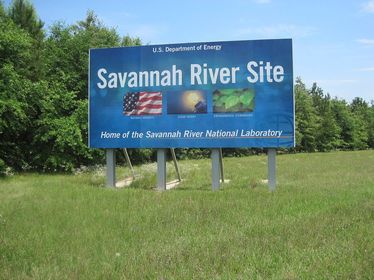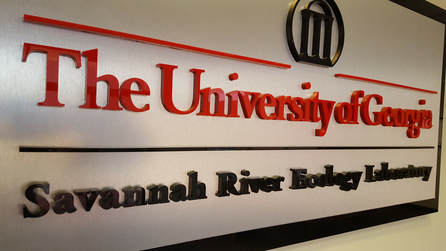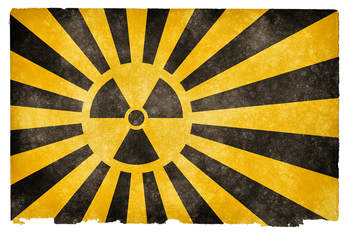"Every time it rains on Burke County, or on any of the communities surrounding SRS, residents, homes, pets and crops could be getting large radioactive doses of tritium." In its July 25 issue, the Augusta Chronicle published a story titled Project aims to educate on radiological monitoring. The article is centered on one of the first educational meetings of Savannah River Ecology Laboratory’s REMOP program, held in Waynesboro this week. SREL is an extension of the University of Georgia and studies wildlife and ecology at the Savannah River Site. REMOP stands for Radiological Education and Monitoring Program, but both the program name and Chronicle headline are a bit of a misnomer. And the story, shallow in detail, leaves a lot to clarify. The program is actually several years in the making, including a contracted needs study conducted under the watch of the Environmental Protection Agency. But as SREL director Dr. Gene Rhodes said during the study presentation, the Department of Energy, whose radioactive material is the largest contributor to local environmental contamination, does not fund public health projects.  REMOP is educating the people of Shell Bluff and Burke County using data collected 15 years ago. The DOE stopped monitoring groundwater wells and other sites in Burke County in 2002. That decision left local communities without any kind of information to understand exactly what their homes, drinking water, gardens and bodies are being exposed to. Cesium and mercury are two of the most dangerous chemicals found in creeks, groundwater and tributaries to the Savannah River from plutonium production, nuclear waste storage and other nuclear related activities at SRS. More common than those is a radioactive element of hydrogen known as tritium. Tritium is a key element in the current US nuclear weapons arsenal, and the SRS tritium enterprise is the only production and tritium capturing facility in the nation. During processing, tritium is released to the environment through both irrigation techniques and atmospheric venting. Amounts have lessened since a new facility started operation in 1994, but annual monitoring reports provided by South Carolina Department of Health and Environmental Control show continued, intentional radioactive releases. Earlier this week, SRS announced that it tripled tritium production this year, but data is not yet available to determine how much additional tritium was released because of the uptick in production.  During the 1990’s, monitoring of groundwater wells in Burke County found tritium in local residents’ drinking water supply. The contamination, though, was found to be above the groundwater line in the wells, meaning the contamination wasn’t from underground releases. It was determined that atmospheric releases of tritium were being pulled down during rainfall. Every time it rains on Burke County, or on any of the communities surrounding SRS, residents, homes, pets and crops could be getting large radioactive doses of tritium. The DOE says area dosage isn’t much higher than typical background levels and that a cross-country flight delivers a higher dosage of radiation. But, according to a 2014 article published by Scientific American, Some evidence suggests the kind of radiation emitted by tritium—a so-called beta particle—is actually more effective at causing cancer than the high-energy radiation such as gamma rays. The REMOP program, while it may be well intentioned, is far from effective. Instead of studying the pathways tritium follows between nuclear weapons production and the kitchen tap, SREL is doing little more than providing technical jargon education about the poisonous materials potentially killing people from their own backyards. Burke County residents should demand more for the generations’ long burden they have borne in the name of national defense at Savannah River Site. Thomas Gardiner, Guest BloggerThomas is an independent journalist with Apollo Consulting Services Group.
1 Comment
|
Savannah Riverkeeper, Inc. • Augusta, GA • Allendale, SC • Savannah, GA
P.O. Box 60 Augusta, GA 30903 USA • [email protected]
Toll Free 844-263-1415 • Office 706-826-8991 • Fax 706-826-8995
Savannah or Allendale: 912-454-8048
EIN # 58-2630660
P.O. Box 60 Augusta, GA 30903 USA • [email protected]
Toll Free 844-263-1415 • Office 706-826-8991 • Fax 706-826-8995
Savannah or Allendale: 912-454-8048
EIN # 58-2630660